The King’s Indian Defense is a unique way of countering the Queen’s pawn opening. It is a very popular hypermodern opening.
A hypermodern opening is a chess opening that deviates a little from the popular theory and principles that guide opening play.
In the hypermodern style, pawns are not used to control the center of the board, rather, minor pieces (knights and bishops) are used.
This usually allows the other side to seize center control early. The side that plays in the hypermodern style will allow the opponent early control of the center while they develop their pieces and then look to undermine that center later on in the game.
The King’s Indian Defense is an opening that adopts the hypermodern style, Black will allow White center control for a while and then strike and look to undermine the center later on.
The moves that characterize the King’s Indian Defense are 1. d4 Nf6 2. c4 g6 3. Nc3 Bg7.
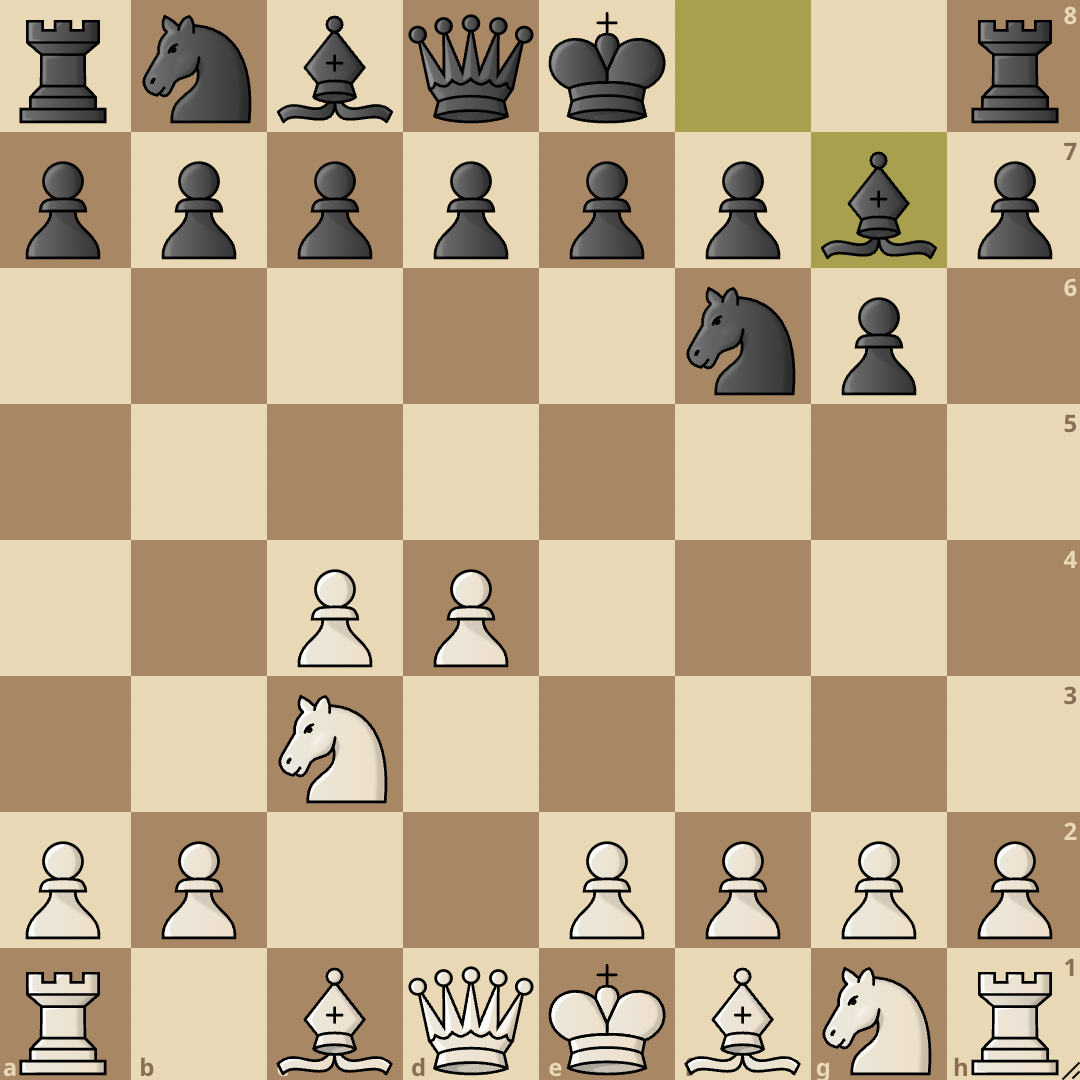
From the starting position, we can see that Black’s idea is to concede the center to White. Later on, Black will challenge the center and put pressure on the white pieces occupying the center square.
There is a lot of theory on the King’s Indian Defense as it is one of the most analyzed openings in chess. We will look at the popular variations that arise from the opening.
The Mainline
1. d4 Nf6 2. c4 g6 3. Nc3 Bg7 4. e4 d6 5. Nf3 0-0 6. Be2 e5 7. 0-0 Nc6
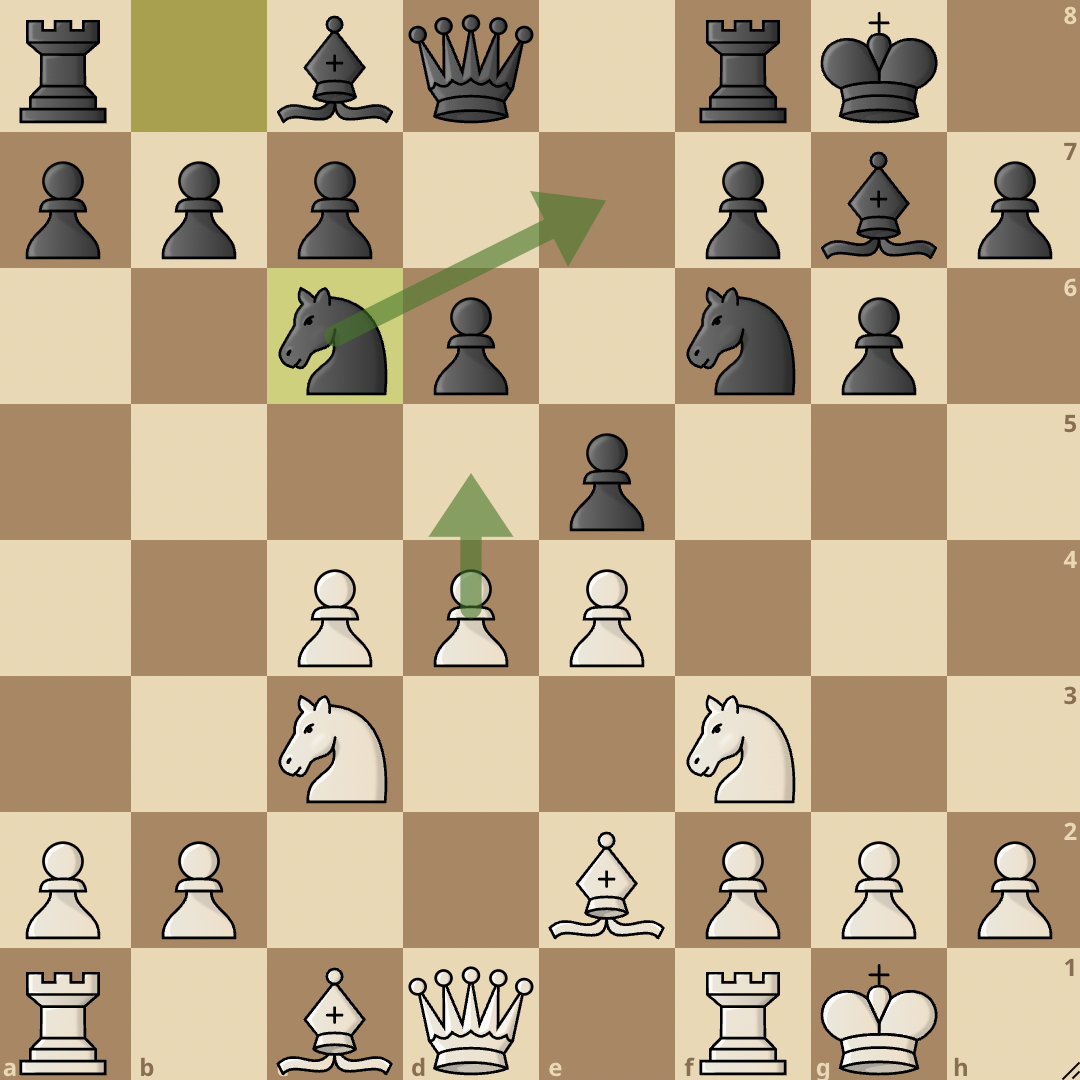
The Mainline, which is also known as the classical variation is the most played variation and it starts after 5. Nf3.
White aims to build a strong center, develop their light-squared bishop, and castle, then look to dominate on the queenside.
Black on the other hand, usually goes for a kingside attack with the aim of checkmating the white king.
Saemisch Variation
1. d4 Nf6 2. c4 g6 3. Nc3 Bg7 4. e4 d6 5. f3
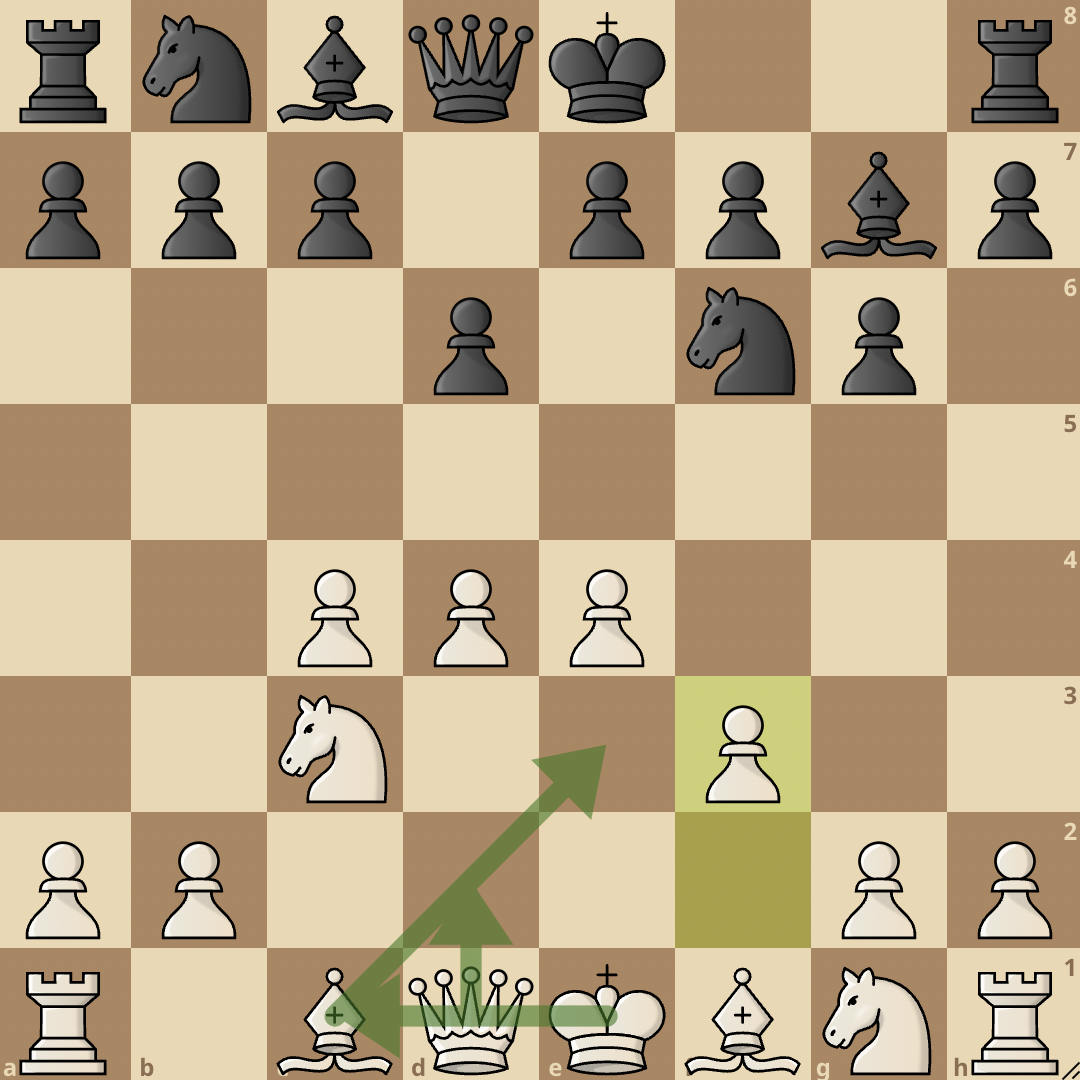
The Saemisch variation is a widely known variation that starts with 5. f3. White plays f3 to add support and solidify the e4 pawn.
Another advantage of f3 is that it prevents the black knight on f6 from landing on g4. The Saemisch is a very exciting variation as both sides will usually castle the opposite side and go for the scalp of the enemy king.
White usually castles queenside and hits the black kingside with everything they’ve got, while Black will coordinate their forces and hit White on the queenside. It becomes a race to see whose king will fall first.
Averbakh Variation
1. d4 Nf6 2. c4 g6 3. Nc3 Bg7 4. e4 d6 5. Be2 0-0 6. Bg5
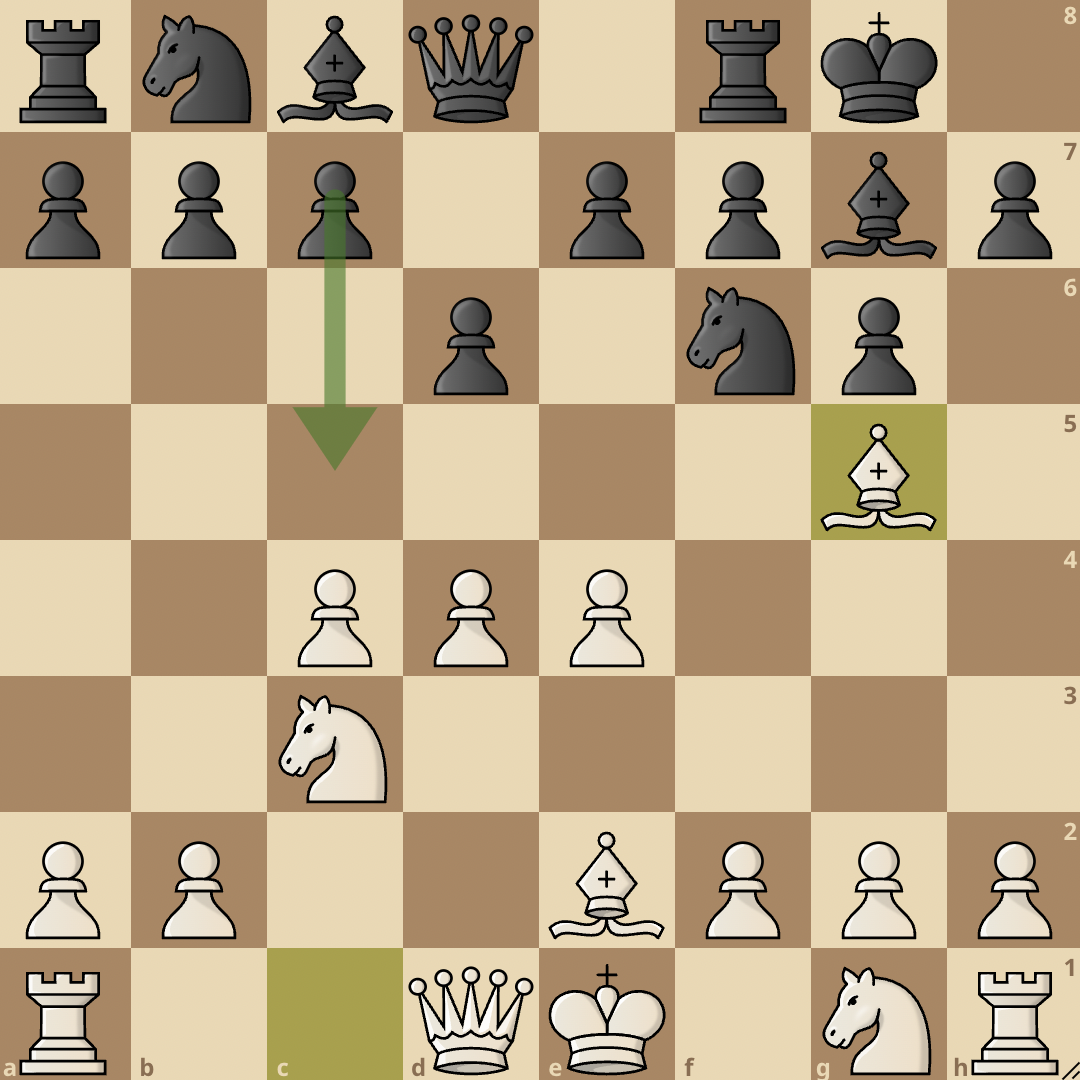
The Averbakh variation was named after the popular grandmaster, Yuri Averbakh.
In this variation, White develops their light-squared bishop to e2 and their dark-squared bishop to g5. The 6. Bg5 move aims to stop the black e-pawn from challenging White’s center with breaks like e5.
Since Black cannot play e5 for the time being, they will undermine the pawn center with 6…c5. White can now choose what type of game they want to play. They can choose to play an open game and capture the c5 pawn with 7. dxc5 or play a closed maneuvering game with 7. d5.
Four Pawns Attack
1. d4 Nf6 2. c4 g6 3. Nc3 Bg7 4. e4 d6 5. f4
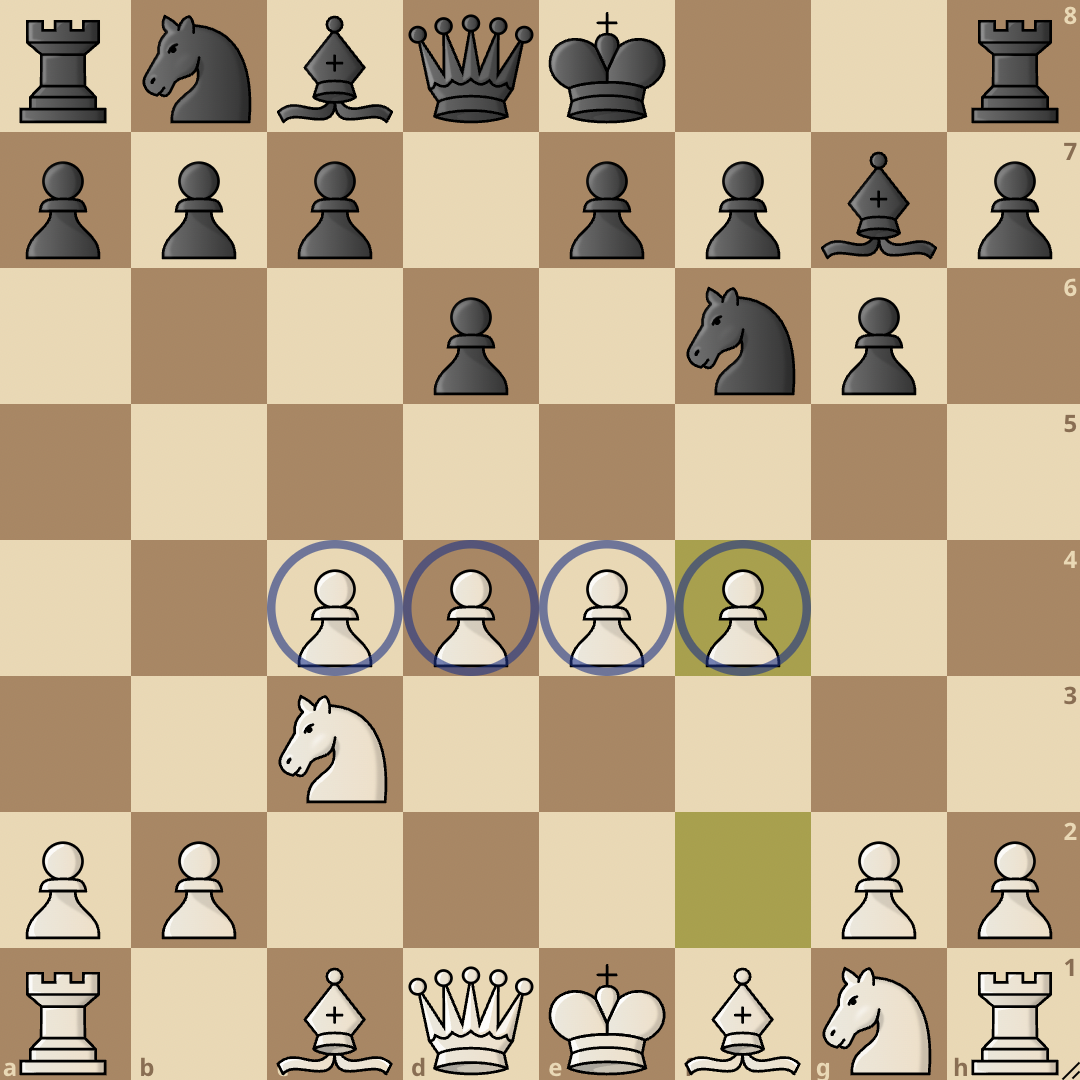
The Four Pawns Attack is an aggressive way of approaching the King’s Indian Defense.
White takes full advantage of the fact that Black conceded control of the center early on in the game and launches a pawn storm on the board with d4, c4, e4, and f4.
White’s intention in this variation is to attack the kingside and overwhelm Black. While Black is not in any immediate danger, they will have to play very carefully to avoid getting destroyed.
However, If Black can survive the early onslaught of the pawns, they will most likely have a better game as White would have extended their pawns which would create many weak squares in their camp.
This risk factor is why the Four Pawns Attack is not often seen nowadays at the highest level.
Fianchetto Variation
1. d4 Nf6 2. c4 g6 3. Nf3 Bg7 4. g3
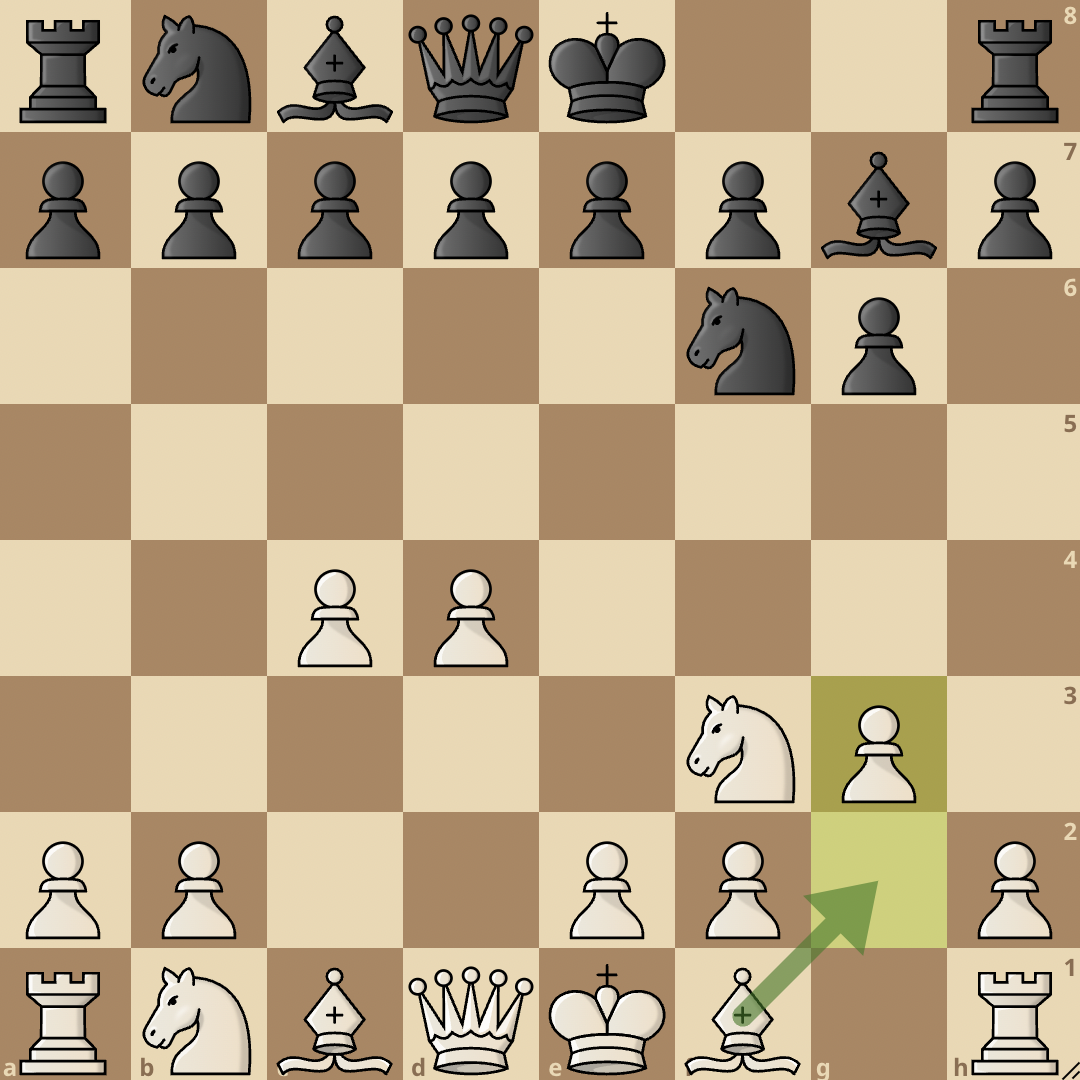
The Fianchetto variation differs slightly from the other popular variations of the King’s Indian Defense.
In the Fianchetto variation, White plays 3. Nf3 instead of the usual 3. Nc6. Black then continues with their original plan and they fianchetto their bishop with 3…Bg7.
White then plays 4. g3 and this is where the fianchetto variation kicks off. By playing g3, White indicates that they’re going for a change of plans and they want to fianchetto their bishop on the kingside, which is a similar move to what Black does in the King’s Indian Defense (creating some sort of symmetry on the kingside).
Since both White and Black have fianchettoed on the kingside, the possibility of Black initiating a kingside attack will be very low. The game will most likely be a slow, maneuvering, and positional one.
Successful Deployments
Touch the moves or move the board around for a better interactive experience.
Boris Gelfand v Garry Kasparov, Linares (1992)
The Linares Tournament of 1992 will forever be remembered as one of the greatest tournaments ever held, it had an attendance of some of the strongest players in the world and a lot of very exciting and timeless games. One of them was Garry Kasparov’s incredible showing of the King’s Indian Defense against Boris Gelfand.
Alexander Alekhine v Fred Dewhirst Yates, Karlsbad (1923)
It’s not very often that a player as strong as Alekhine gets beaten over the board, but that was exactly what happened at Karlsbad in the year 1923 when Alekhine faced Fred Dewhirst Yates. Mr Yates would play the King’s Indian Defense so beautifully that he not only won the game but also received the brilliancy prize.
V. Timofeev v Rashid Nezhmetdinov, D. Vasilevsky Memorial (1970)
Rashid Nezhmetdinov was a joy to watch during his playing days. He embodied the principle of attacking chess and played some wonderful games that will forever remain timeless. In the Vasilevsky Memorial of 1970 tournament, Rashid employed the King’s Indian Defense to win a very nice game against V. Timofeev.




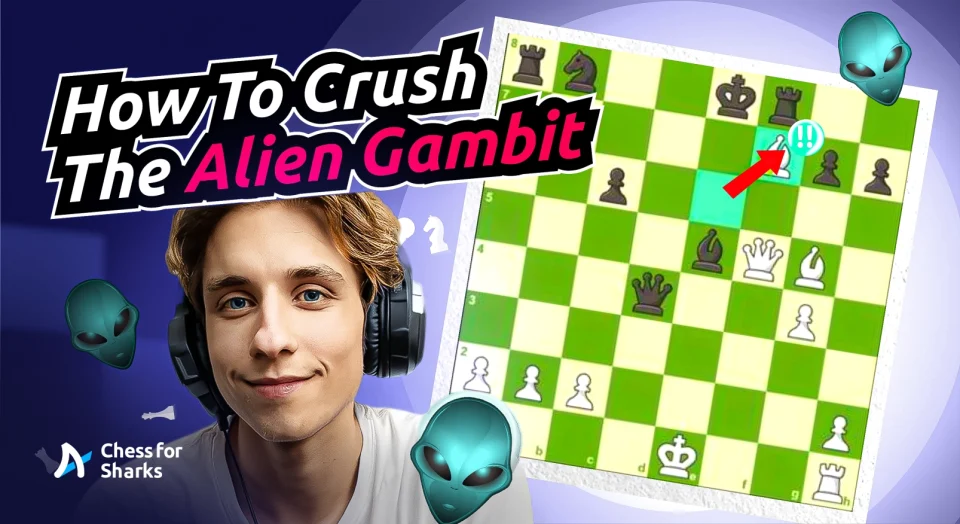

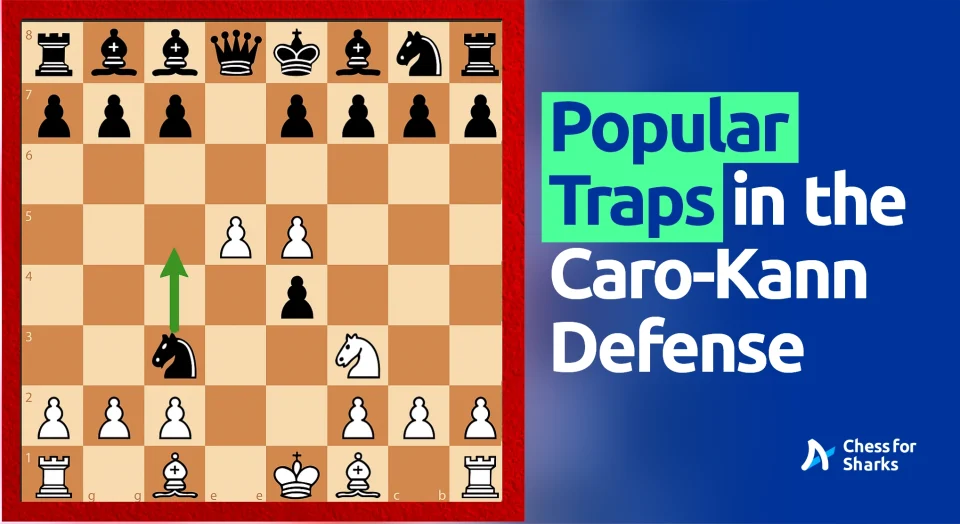
join the conversation